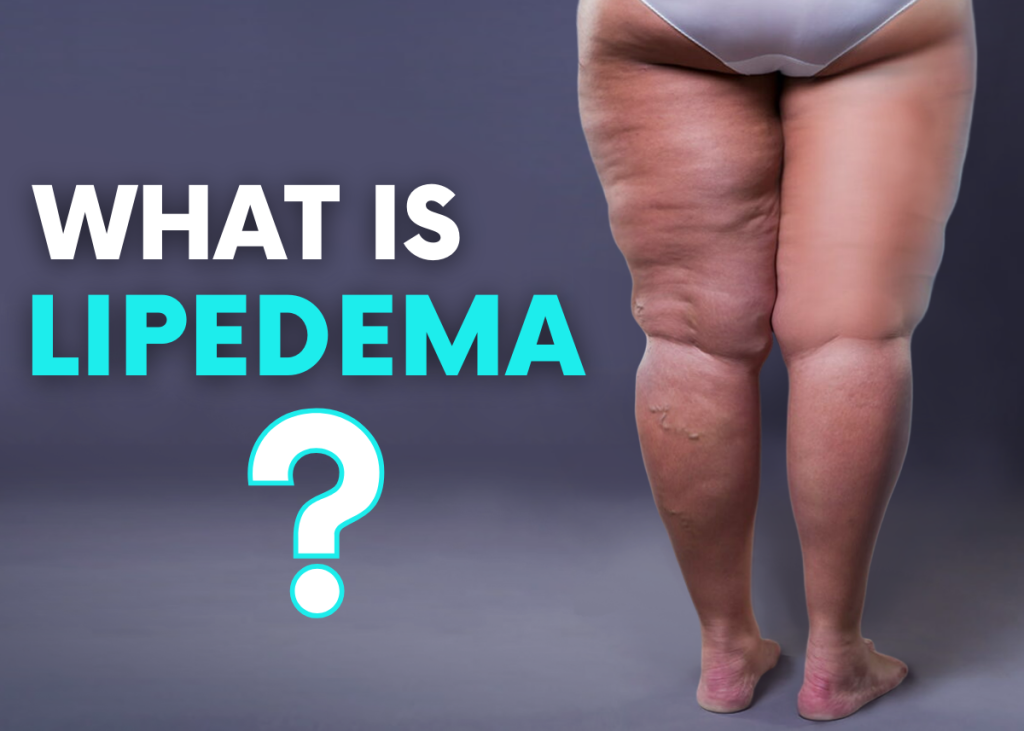
Lipedema is a disease that affects the daily lives of many women and has virtually become a public health issue. The fact that this disease has been confused with obesity for many years has led to patients not being properly diagnosed and treated. In fact, many patients have not realized their condition, thinking it was caused by ‘cellulite’.
Lipedema is still not very well-known among the public today. Even a majority of doctors, when asked ‘What is lipedema,’ can provide only limited information about this disease. According to current medical knowledge, lipedema is a connective tissue disease that seriously affects the patient’s health.
Lipedema particularly causes thickening of the subcutaneous fat tissue in the leg area of women and leads to severe swelling. This condition leads to pain and some limitations in patients. However, the complaints associated with lipedema can be successfully treated with various treatment methods.
In the continuation of this article; What is lipedema? How do I know if I have lipedema? You can find answers to these questions and detailed information about lipedema symptoms and findings with lipedema images.
Table Of Contents:
- What is Lipedama?
- What are the Symptoms of Lipedema?
- What Orthopedic Problems Occur in Lipedema?
- What are the Stages of Lipedema?
- What are the Types of Lipedema?
- How is Lipedema Diagnosed?
- How is Lipedema Treated?
- Liposuction Surgery in the Treatment of Lipedema
- Frequently Asked Questions About Lipedema
What is Lipedema?
Lipedema is a fat storage and connective tissue disease. In patients, fat accumulates in the subcutaneous tissue and some changes occur in the connective tissue. Fat storage is especially noticeable in the legs and arms. However, it is more commonly seen in the legs than in the arms.
In lipedema patients, the fat accumulation in the leg areas is higher compared to the trunk, or the abdominal region, and the fat deposition does not extend below the ankle. This condition leads to a disproportionate appearance in the body.
Lipedema is a disease that occurs most frequently in women and is almost non-existent in men, making it typically a female condition. These patients usually see themselves as fat and overweight. This is because most women are not aware of their condition, thinking it stems from being overweight and believing that losing weight will slim down their legs. However, even if patients lose weight and reduce the amount of fat in their trunk, the swelling in their legs does not decrease.
The swelling in the legs causes aching pains and, especially due to the weight, leads to restricted joint movement and difficulty in walking. Difficulties experienced while walking and exercising can lead to weight gain in the patient, thereby intensifying the severity of the disease.
Due to the swelling in the leg area, patients with lipedema consult various medical departments and doctors. Among these, the department commonly consulted is cardiovascular surgery. However, no results are obtained from the treatments.
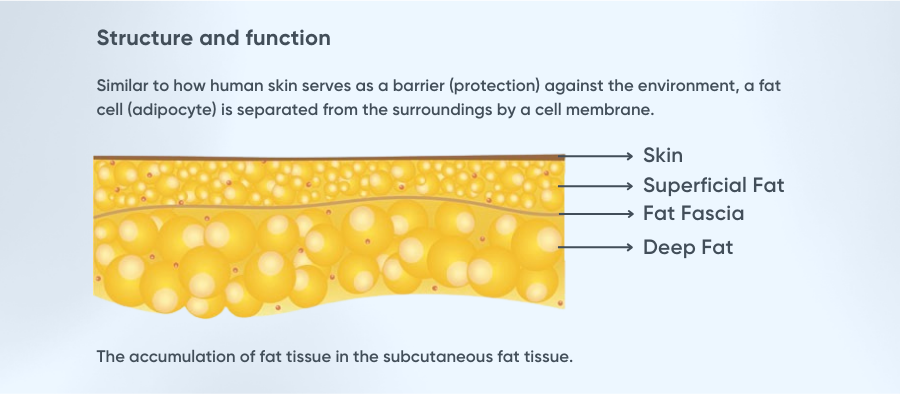
What Are the Symptoms of Lipedema?
The onset of lipedema, particularly during periods when women undergo hormonal changes, emerges and progresses over time. These periods include puberty, pregnancy, and menopause. It can also occur due to conditions that disrupt the hormonal balance of the patient, such as trauma, major surgeries, and serious illnesses.
Lipedema is a slowly progressive disease. The disease is accompanied by obesity (fatness) at various levels. The presence of obesity causes the disease to become more severe. Although treating obesity reduces the severity of the disease, the swelling in the legs does not completely subside.
In lipedema patients, the legs are thicker compared to the trunk due to the increased fat tissue. Swelling and an increase in diameter are observed in the hips, thighs, and calves. In other words, there is a disproportion between the legs and the trunk.
So, does lipedema cause pain? The swollen areas are very sensitive to touch. When these tissues are pressed with the hand, the patient feels more pain than what would normally be expected. Additionally, patients experience gnawing types of night pains.
In affected areas, the subcutaneous tissue thickens and capillaries can be seen in the skin of these regions. As a result of the sensitization of capillaries, even mild impacts to these areas can cause bruising on the legs.
Increased swelling around joints leads to restricted joint movements in patients. The heaviness of the legs and the resulting inability to walk lead to weight gain, and aggravate and progress the disease.

| Table 1. List of lipedema symptoms and the most common complaints in patients |

What Orthopedic Problems Occur in Lipedema?
Patients with lipedema can face many orthopedic problems. One of them is postural deformities in the spine due to the disruption of body balance in patients. Postural (stance) deformities occur in patients related to lipedema, followed by flattening of the cervical spine. This is followed by the formation of a hump-like protrusion at the base of the neck. In fact, many patients visit the doctor thinking there is a mass in their neck.
Another orthopedic problem that develops due to lipedema is the deepening of the lumbar curve and more prominent hips as a result of spinal imbalance. This situation can disrupt the load balance on the patient’s hips and knees or lead to bowed legs, also known as “X” leg deformity.
Additionally, lateral displacement of the ankle and flatfoot can also develop. Because these patients have connective tissue disorders, problems like joint dislocations and ligament injuries are more frequently seen.
| Table 2. List of orthopedic problems related to lipedema |
What Are the Stages of Lipedema?
As with every disease, lipedema also has stages. There are 4 stages of lipedema disease (Figure 1). These include:
- Stage 1: Swelling in the legs is seen at the beginning of lipedema. However, the skin is smooth and soft. Subcutaneous nodules are difficult to detect by touch. The patient may experience pain, and even light bumps can cause bruising on the legs.
- Stage 2: Subcutaneous fat deposition and thickening become more pronounced. Nodules grow to a size that can be felt. The smooth appearance of the skin becomes disrupted, leading to a noticeable rough texture.
- Stage 3: Subcutaneous tissues become thicker. Sagging of the skin is observed. Due to increased fat deposition, there is restriction in joint movements, imbalance, and difficulty in walking.
- Stage 4: In the final stage, swelling in the legs greatly increases. Swelling in the feet occurs due to the disruption of the leg’s lymphatic circulation. In this stage, patients may also develop lymphedema (increased intercellular fluid and fluid accumulation due to a disorder in the lymphatic system).

What are the Types of Lipedema?
A classification system has been introduced according to the regions of involvement of lipedema in the leg (Figure 2). This classification system is as follows;
- Type 1. The involvement is mostly in the hip area.
- Type 2. Involvement of the buttocks and thighs is observed.
- Type 3. The whole leg is involved.
- Type 4. There is involvement in the arm region.
- Type 5. Involvement of the calves is observed.

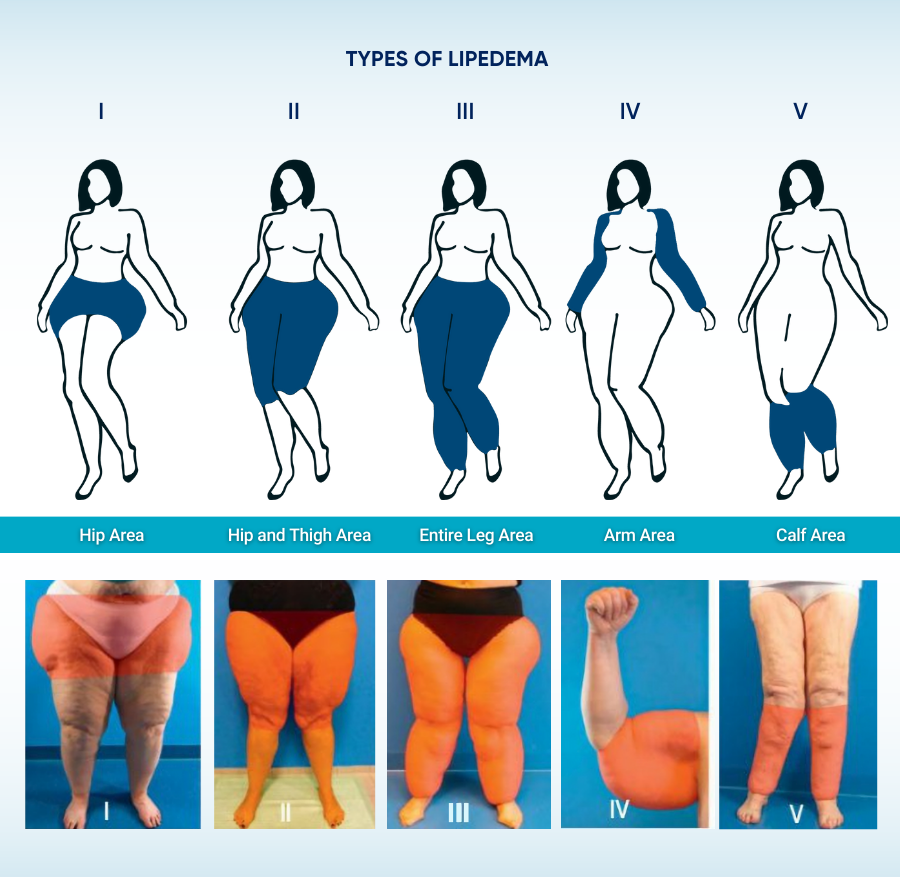
How is Lipedema Diagnosed?
There is no specific diagnostic method to diagnose the disease. The diagnosis can be made by listening to the patient’s history and physical examination. However, some tests may be ordered to differentiate the disease from other diseases. “Lymphography” or “scintigraphy” can be used to examine lymphatic circulation, especially in patients in the last stage. Doppler ultrasound can be used to visualize the condition of the veins.
How is Lipedema Treated?
Lipedema treatment should be applied with a multidisciplinary method. In other words, more than one doctor and specialist may need to participate in the treatment of lipedema. In these patients, obesity must first be treated and prevented. If there is an obesity condition that develops with lipedema, the first thing to do is diet.
Bariatric surgery (obesity surgeries that help weight loss) and interventions can be applied in patients who cannot lose weight despite appropriate diet. Here, the main goal in weight loss is to treat body obesity. Lipedema is usually resistant to weight loss. In other words, leg swelling and leg pain are not significantly reduced as a result of weight loss.
However, when obesity is left untreated, it leads to an increase in the severity of lipoedema and even if lipoedema is treated, the likelihood of recurrence increases. For this reason, in patients with severe obesity, obesity should be treated with methods such as diet, exercise or bariatric surgery before lipedema treatment.
Another treatment method that can be applied in lipedema is physical therapy. Manual lymphatic drainage (special leg massages applied under the supervision of specialists) and bandaging can be tried in the physical treatment of lipoedema. However, successful and long-term results cannot be obtained with these methods.
Surgery can be applied to patients who do not benefit from lipedema exercises, weight loss and physical therapy. Today, the most preferred surgical method in the treatment of lipoedema is Liposuction (Liposuction) / Lipodem surgery.
Liposuction (Liposuction) Surgery in Lipedema Treatment
Today, the preferred surgical method for lipedema surgery is liposuction (lipodema) surgery (fat removal surgery). So, what is Liposuction? Liposuction literally means “suction of fat”.
Liposuction is performed under general or spinal anesthesia. Although it can be applied under local anesthesia with some special solutions, general anesthesia is more appropriate for patient comfort. Because the amount of fat to be removed in lipedema surgery varies from person to person and the surgery can take 3-6 hours.
Before the liposuction surgery, the surgeon who will perform the procedure draws on the legs by marking the areas of excess and pain in the patient’s legs by talking to the patient. After the drawing, the patient is taken to the operating room and anesthesia is applied.

After sterile preparation of the patient’s legs, the surgical procedure begins. During the surgical procedure; with the help of a special tip of the liposuction device, the areas where fat removal will be performed are inflated with sterile solutions.
This inflation of the adipose tissue facilitates the separation and absorption of the adipose tissue and prevents damage to tissues other than the adipose tissue. It reduces capillary damage and blood loss, especially by protecting the lymphatic vessels. After the subcutaneous tissues are inflated, a varying number of 5 mm skin incisions (depending on the need) are made near the previously marked areas.
In lymphatic sparing surgery, special tips that do not traumatize the soft tissue are inserted into the subcutaneous fat tissues and the subcutaneous fat tissue in the areas where excess fat and pain are intense is absorbed and the legs are thinned.
Lipedema Surgery: How Many Kilos of Fat Can Be Removed with Liposuction?
The amount of fat to be removed with liposuction may vary according to the patient and the health and safety regulations of the countries. Although health and safety regulations in different countries specify the amount of fat that can be safely removed from the patient differently, a maximum of 3 liters from one leg and a total of 6 liters from both legs in a single session are accepted safe levels. In patients who need to remove more fat than these amounts, it is safer for the patient to perform the procedure in two or more sessions.
Although there is no clear information in the literature, there should be at least 6 months between sessions. Patients should keep in mind that lipedema surgery is not a method applied for aesthetic purposes.
The main purpose of lipsuction surgery is to remove excess fat, thus relieving leg pain and physical limitations of patients. Surgery is a serious surgical procedure and should be performed in well-equipped hospitals, with the patient’s risks planned and precautions taken.
What is the Recovery Period After Lipedema Surgery?
Since a significant amount of fat is removed in lipoedema surgery, patients need to be hospitalized and monitored for at least one night. If necessary, the hospitalization period can be extended. After lipedema surgery, patients are given blood thinners, antibiotics and painkillers. In addition, vital organs such as the kidneys are supported by giving the patient fluid supplements and patients are advised to drink plenty of water.
A few hours after the operation, when the patient is fully recovered and the pain subsides, the patient is encouraged to stand up and walk. In this way, the risk of vascular clotting is reduced.
In lipedema surgery, the patient is dressed in stockings similar to compression stockings in the operating room. Patients are recommended to wear these stockings for at least 3 months after surgery. Patients with very advanced stages of the disease can wear these stockings for much longer. Some patients may even need to wear these stockings for life.
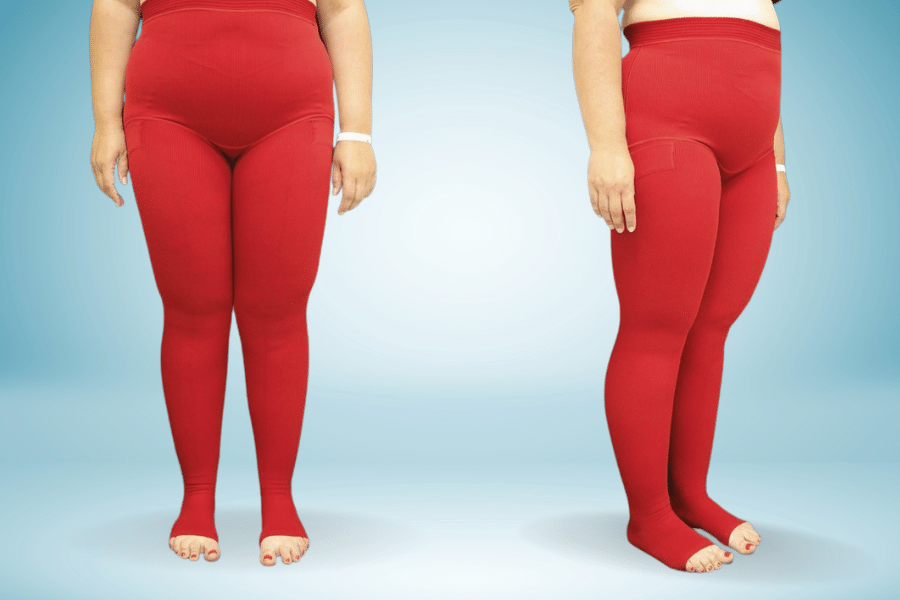
Patients are not allowed to bathe for the first 3-5 days after lipedema surgery. After these periods, patients can shower with socks depending on the condition of the wounds. A few days of fluid leakage from the holes opened for liposuction, swelling and bruising in the leg is considered a normal condition and usually resolves within a few weeks.
In addition, postoperative patients should undergo lymphatic drainage massage therapy by a physiotherapist as soon as possible. As the swelling in the leg decreases over time, the need for therapy decreases.
Things to Consider Before and After Lipedema Surgery
The most important determinant in the success of lipedema treatment is the patient’s compliance with the treatment. Better results are obtained in patients who follow the preoperative and postoperative recommendations.
What patients need to do starts before surgery. Before surgery, patients should start eating a healthy diet and doing exercises appropriate to their condition. This is because weight gain affects the success of the surgery.
Lipedema can recur with excessive weight gain. It is very beneficial for the patient to stand up, walk and exercise as soon as possible after surgery. It is also important for patients to use the recommended lipedema stockings regularly after surgery and to attend the recommended therapies.
What are the Risks of Lipedema Surgery? Is it safe?
According to treatment guidelines published in different countries in recent years, lipedema surgery has been included in the category of safe surgeries. In some clinics, patients are discharged on the same day. In some centers, this procedure is even performed under local anesthesia.
However, as with any surgery, lipedema surgery involves a number of risks and complications, and this surgery is a comprehensive procedure that should be taken seriously. For this reason, patients should be followed up after surgery.
To start with the most serious complications, the first is injuries to major vessels, nerves and organs. These complications were seen decades ago when liposuction first started. However, this is because the surgical cannulas used at that time were sharp-tipped.
Today, with the use of modern blunt and atraumatic tipped cannulas, these complications are almost never seen. Temporary numbness of the skin may be observed due to the superficial nerves running under the skin being affected by the vacuum.
Other risks in lipedema surgery are complications due to coagulation problems such as deep vein thrombosis, pulmonary embolism and fat embolism. These are complications that can endanger the patient’s life. However, these risks are reduced by giving patients blood thinners.
In addition, lymphatic vessels may be injured due to surgery. In this case, the patient may become a lymphedema patient. Today, this complication is very rare with the use of small diameter cannulas and lymph-sparing surgical technique.
Surgical site infections are almost never seen. In some advanced patients, sagging skin may be seen due to thinning of the subcutaneous tissues. Skin lift surgery can be applied to these patients as a second stage.
Today, the only safe method that can remove pathologic lipedema tissue is liposuction surgery. Although good long-term results are seen with this surgery, the disease may recur due to underlying genetic and hormonal factors. However, the risk of recurrence can be reduced with serious diet, exercise and a physically and mentally healthy lifestyle.If you have symptoms of Lipoedema, you can contact us for more detailed information about diagnosis and treatment and you can find answers to frequently asked questions about Lipoedema in the rest of our article.
Frequently Asked Questions About Lipedema
What is lipedema?
Lipoedema is a connective tissue disease that is often confused with obesity (obesity) as a result of hormonal changes, capillary disorders and genetic disorders; it causes thickening and swelling in the legs, hips and arms with fat tissue accumulation in the legs, hips and arms.
How do I know if I have lipedema?
There is no specific test or diagnostic method for the diagnosis of lipedema. The diagnosis can be made by detecting the symptoms of the disease. Patients may even detect these findings themselves.
If the swelling in the hips, thighs and calves is more than your torso; if the swelling and thickening in the legs do not go away despite losing weight and getting rid of your body weight, if swelling does not occur in the feet and hands, if the swollen areas bruise easily, if there is increased capillary vascularization in these areas, if you experience orthopedic problems with leg pain and thickening in the legs, you may most likely have lipoedema.
Does lipedema go away with weight loss?
Although weight loss constitutes an important part of the treatment of lipedema, the swelling in the legs may not disappear despite weight loss. The best proven method to eliminate lipedema tissue is lipedema surgery using liposuction.
Are lipedema and cellulite the same thing?
The condition popularly known as “cellulite” is a skin disease that occurs in the superficial skin layer and causes an orange peel appearance on the skin. Lipedema is a disease that mainly affects subcutaneous fat tissue and involves very deep fat layers.
In cellulitis; conditions such as pain, joint restriction and bruising do not occur. These findings are observed in lipedema. For this reason, lipedema is also known as “painful cellulite” among the people.
Does lipedema go away with sports?
Sport plays an important role in the treatment of lipedema. However, these patients have difficulty in doing sports due to the thickness and swelling in the leg area. Since this disease is a connective tissue disease, thickening and swelling of the legs usually do not decrease as much as desired with diet and exercise. Surgery may be considered to reduce these swellings.
Which doctor should I consult for lipedema?
Lipedema is a connective tissue disease and can affect different systems in the body. For this reason, lipedema should be treated by different specialists. Orthopedists, plastic surgeons, bariatric surgeons, diet specialists, lymphologists and many other specialties can be involved in the treatment process. However, lipedema surgery should be performed by surgeons trained in this field.
What should people with lipedema eat?
In the adipose tissue of patients with lipedema, there is an increase in water retention due to proteins between cells. There is also salt retention in this region. For this reason, patients with lipoedema should follow a low-calorie, low-salt diet that does not cause edema and get help from a specialized dietician for this diet.
Does lipedema show up in blood tests?
There is no specific diagnostic test for lipoedema. The disease is diagnosed by detecting clinical signs.
Will Lipedema recur after treatment?
Lipedema is a genetically inherited connective tissue disease. The legs can be successfully thinned with surgeries such as liposuction to reduce lipedema tissue. However, because the genetic code does not change, the disease may recur if diet and exercise recommendations are not followed.
What is the Difference Between Lipedema and Lymphedema?
Lymphedema and lipedema are two different diseases that cause swelling in the arms and legs. Lymphedema is the accumulation of excess fluid in the arms or lower legs. It is caused by a blockage in your lymphatic system, which is part of your immune system. A blockage prevents your lymph fluid from flowing properly and the build-up of excess fluid causes swelling. It usually affects one arm or leg.
Lipedema is a painful fat storage and connective tissue disease under the skin. Fat deposition is particularly pronounced in the legs and arms. Commonly seen in women, lipedema affects both legs and/or both arms equally. Lymphedema may also develop in the later stages of lipedema.



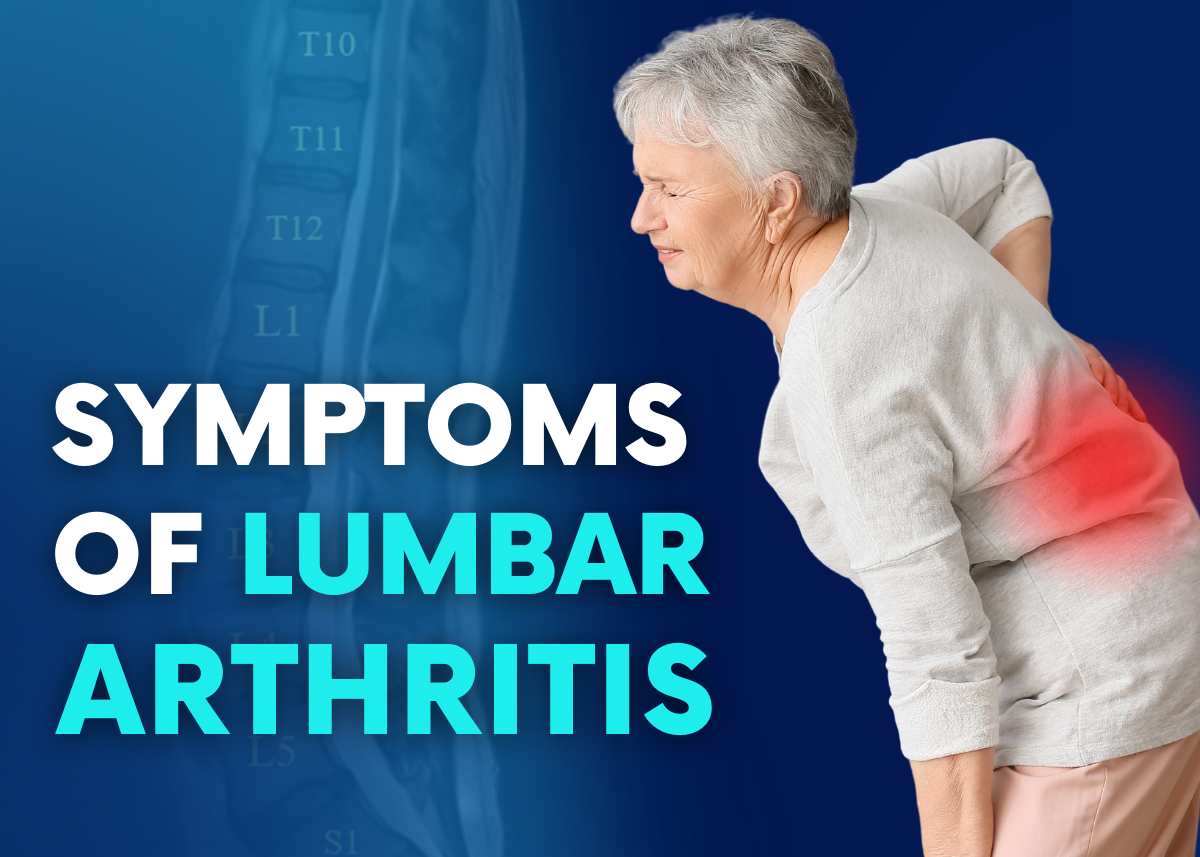

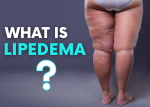

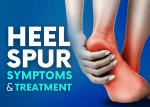
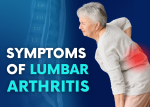
Leave a Comment